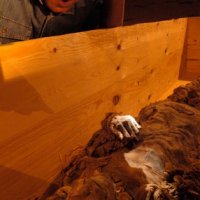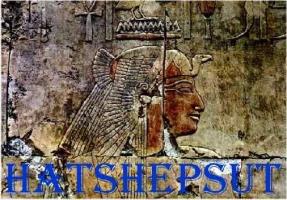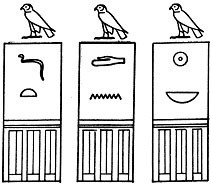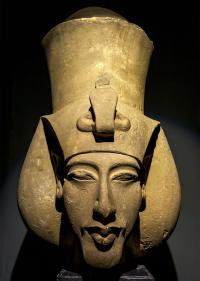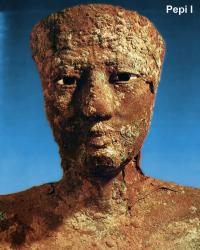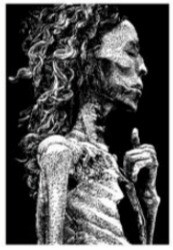The queen-pharaoh HATSHEPSUT
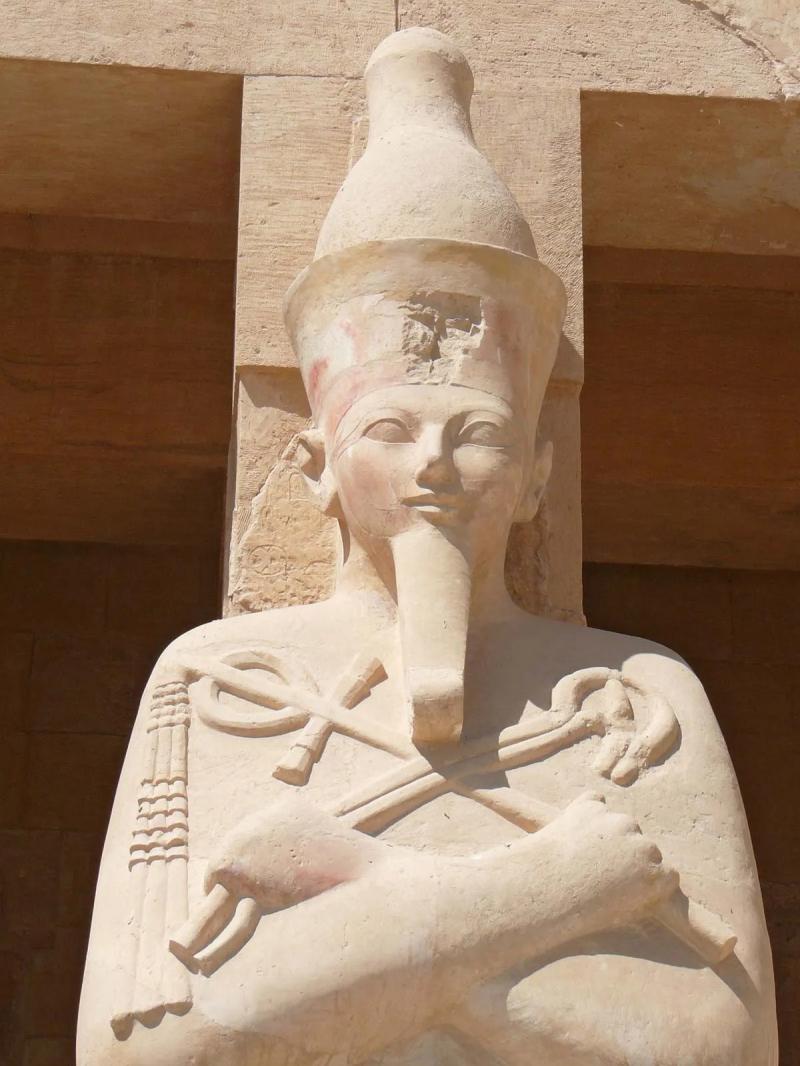
Of all the great female figures of ancient Egypt, Hatshepsut, the only woman who was a pharaoh, stands out. Hatshepsut was the daughter of Pharaoh Thutmosis I and the Great Royal Bride Ahmes. Having survived her "legitimate" brothers, had she been born a male she would certainly have been ruler; but since Egyptian tradition allowed only men to succeed to the throne, Hatshepsut went in marriage at a very young age to her half-brother Thutmosis II (born from the union of Thutmosis I with a secondary wife, Mutnofret), who was crowned Pharaoh of Upper and Lower Egypt. Hatshepsut became the Great Royal Bride, the principal consort of Thutmosis II, whose eldest son would inherit the crown.
Thutmosis II died prematurely, and only one child, Thutmosis III, son of the king and concubine Astet, was mentioned in the will. His young age prevented him from reigning alone, so Hatshepsut (who was his aunt-mother-in-law) joined him as regent. Later she, claiming her own "divine" lineage, proclaimed herself Pharaoh. To fit the part and be accepted by the people but especially by royal officials, Hatshepsut began to dress as a man during public ceremonies; she even had herself portrayed with a beard and male attributes.
This confused archaeologists for a long time.
During the two decades ruled by the Pharaoh-queen, Egypt enjoyed peace and prosperity. Hatshepsut's policy did not include any military ventures, apart from a few small expeditions to Nubia (present-day Sudan). As far as the artistic plan is concerned, mention should immediately be made of her mausoleum, the funerary temple at Deir-el-Bahari, formerly called "Djeser Djeseru," "the holiest place." Inside the temple are depicted images of Hatshepsut and her grandson-son-in-law Thutmosis III and the very famous peaceful expedition to the distant land of Punt. Historians still disagree on the location of this area; however, it is thought to be no higher than the latitude of Cape Guard Fui in the Horn of Africa. This has been called the "first oceanographic expedition in history," and its importance should be sought in the details of the descriptions of the landscapes, flora, fauna and inhabitants. The Egyptians imported many exotic products from Punt: scented woods, gold, animal skins, myrrh, amber, cinnamon, and frankincense.
Hatshepsut had only one daughter, Neferura. She appointed her guardian and tutor Senenmunt, the architect who directed the work at Deir-el-Bahari. Senenmunt was most likely not from a wealthy family, and it is still unknown how he could have acquired so many honorable titles; not a few suspected an intimate relationship between the two. It is true that the architect received as a gift from the Pharaoh-queen a precious sarcophagus (thought to have been intended for Hatshepsut when she was still one of Thutmosis II's wives). But this does not immediately suggest a relationship beyond the gratitude of a ruler.
And Hatshepsut also died. It is not known exactly how, but it is highly unlikely that there was a coup d'état. Thutmosis III was crowned Pharaoh; he is remembered in ancient history as "the Napoleon of Egypt" for the many battles he won that expanded the Egyptian empire. But he is also known because according to some historians he undertook "damnatio memoriae" against his aunt-mother-in-law: everything that depicted or remembered Hatshepsut was erased and replaced with the names of the three Thutmosis. But why this condemnation?Some scholars believe that from the beginning Thutmosis III hated the one who usurped his throne. However, we must not forget that Hatshepsut, during her rule, had herself sent her nephew- stepson to the academy, and we know that Thutmosis III is remembered precisely for his military prowess. Credit is therefore also due to the woman-pharaoh. Other scholars think it was not the work of Thutmosis III, but of one of his successors who feared usurpation by a woman of royal lineage: the flourishing reign of Hatshepsut was to be forgotten not so much out of hatred, but to preserve Egyptian tradition.
But in spite of anyone who wanted to drive her into oblivion, after 3,000 years Hatshepsut reappeared on everyone's lips and is considered a modern character, perhaps too ambitious but unparalleled. She was not the only instance of a woman assuming power in Egypt, nor was she the only queen to be buried in the Valley of the Kings, but it was her reign that differentiated itself: a peaceful reign aimed primarily at trade, so that the people would not lack for anything.











